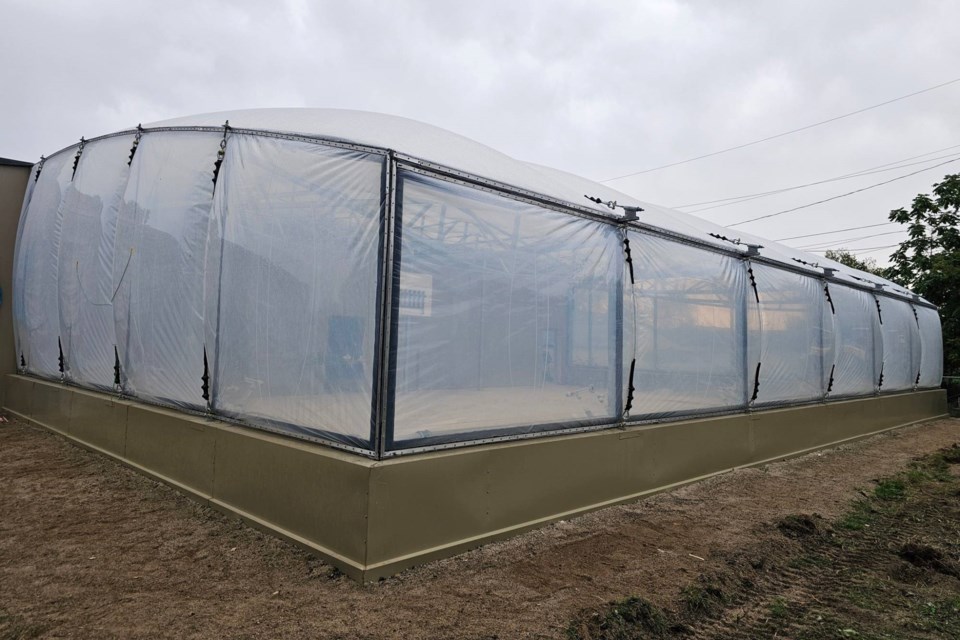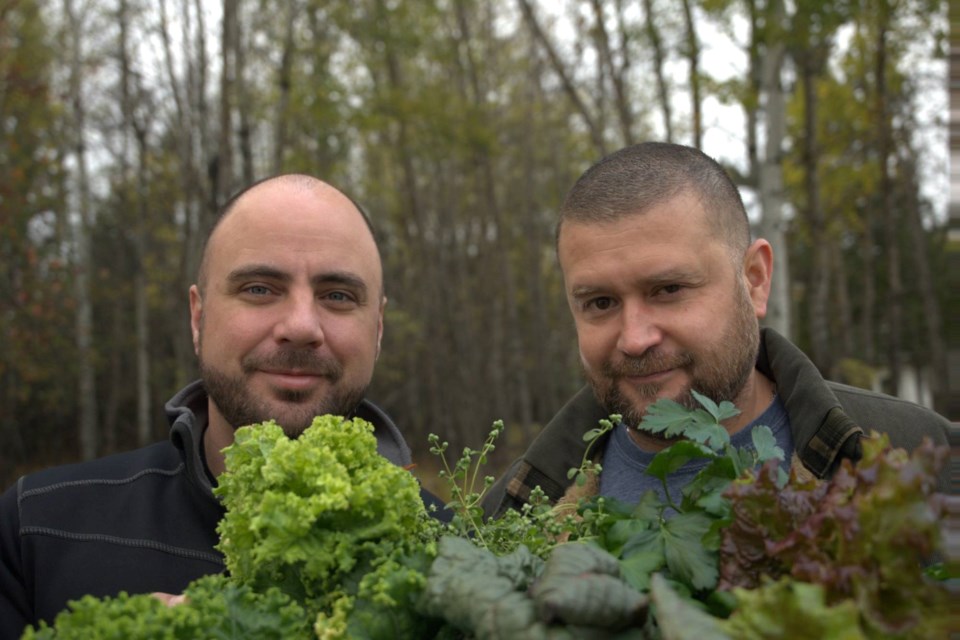Benjamin Feagin is on a mission to transform the way Indigenous communities grow and sustain their own food sources.
The CEO of Dryden-based AgriTech North admits the company — which aims to lower fresh food costs for Indigenous communities by 25 per cent — has “lofty goals.”
But Feagin is one step closer to seeing this vision fulfilled. With their research recently validated in a joint project between Collège Boréal and Sheridan College, the company has hit a major milestone along its journey to developing its patented greenhouse technology.
“With this technology, you'll be able to extend beyond the three or four crops that are barely financially sustainable right now, which are peppers, cucumbers, tomatoes and strawberries,” Feagin told Northern Ontario Business.
“You'll now be able to grow way more in a commercially viable way.”
The technology centres around thermal insulation between the glass panes insulating the greenhouse. While double-paned insulation is more common in other parts of the world, Canada has experienced some challenges in getting a fabricator to develop the needed material to make it viable.
But in tests conducted at its 10,000-square-foot Living Lab facility, AgriTech’s patented glass hit its target of approximately 1.7 watts of heat loss per square metre. Compared to regular double-paned greenhouse glass, that’s about half the heat loss expected.
It’s also a cheaper solution, Feagin said, adding that it will cost half the amount to heat in winter. The glass will also have a lifespan of 50-plus years, way ahead of a glass greenhouse’s typical 10-year lifespan, or a polycarbonate’s one-year expectancy.
And as part of the funding arrangement with the provincial government — which recently gave AgriTech $500,000 through its Northern Ontario Heritage Fund Corporation (NOHFC) — manufacturing of the greenhouses is expected to ramp up within three years.
“I feel like we're absolutely on the right track,” Feagin said. “I absolutely think that we're going to change the entire industry with incredibly disruptive technologies.”
It could be a game-changer for remote communities, which often struggle with providing members with fresh food at affordable prices.
And it’s not just about growing lettuce and kale, Feagin said. He envisions access to a source of high-caloric crops for every community.
“Stew crops are by far the most common request,” he said. “Such as potatoes, onions, and carrots. But those also happen to be the most difficult for current CEA [controlled environment agriculture] establishments, which generally base all their models off of lettuce.”
The reliance on growing lettuce, and basing their data models on how well the crop holds up, is a bit faulty, he said.
“That's an urban pipe dream, that lettuce is somehow a solution to anything because it has such little nutritional content,” he said. “It's not a viable food crop to be basing any business model off of. It does have a lot of data, but it's not doing anybody any favours in regards to food security.”
- Dryden indoor farmers win national pitch competition
- Farm to Fork: Growers look to tech to de-risk farming in the North
Once the new greenhouse model is in market, communities will be able to grow food cheaper, more abundantly, and with less capital cost. Feagin estimates operating costs will also be halved.
He also touts the greenhouses’ inclusion of AI and data-gathering techniques that help operators track their crops and understand — and predict — bumps in the process.
“Because of the status quo of the industry, it's too expensive on the capital side,” he said. “As a result you can never scale and you can never progress growing food, because the system is too expensive to grow year-round.”

That cost usually necessitates dipping into the public purse as a food security measure. AgriTech itself has benefitted from several government grants, but Feagin says the industry as a whole needs to look beyond relying on taxpayers.
“Our goal is to make it so you don't have to put in any public money at all,” he said. “That Indigenous communities can stand on their own two feet. Don't have to have a handout to achieve food security and sovereignty.”
He also envisions that these greenhouses could create commercial ventures for remote communities, generating a reverse economy.
“All of these technologies combined are intended to provide that level of independence, putting our rural, remote communities first,” he said. “Of course, if it works up here at small scale, it's going to pay off in spades at the bigger scale.
There’s also plenty of institutional challenges ahead, Feagin said.
“There are so many problems with this industry,” Feagin said. “As a prior research scientist with the U.S. Department of Energy, I can tell you that there are.
“There are so many needs in this industry for improvement and innovation,” he said. “We find a solution to one big thing, like the greenhouse issue, and then we come up against another one, which is the air conditioning and dehumidification refrigerant issue.”
Knowledge and the skills gap is also a major roadblock for groups looking to establish sustainable food operations.
“What we found is that when you start tugging on the line of a social issue like food security, you find that things are very interconnected,” he said, adding that people — researchers, government, investors — want AgriTech to separate out one issue and focus on it.
Unfortunately, he said, 20 years of failure in the industry shows that current approaches to deeper issues that plague First Nations simply don’t work.
“When you start trying to solve an issue, all these other problems, including social issues or cultural issues, are going to come to the forefront,” he said. “If you don't deal with them, it doesn't matter what your technology is or what your solution is, it's not going to be successful because they're not addressing the surrounding issues.”

Despite those challenges — Feagin refers to the industry’s current approach as “trying to float a boat with 50 holes in it” — AgriTech has come up with a set of guidelines that intend to keep the ship afloat.
The company’s four pillars — food security and sovereignty, education, sustainability and workplace diversity and inclusion — are a nod to Feagin’s Métis heritage, and might run against the grain of current corporate thinking.
He even concedes that it sometimes takes months to bring others “up to speed” on their approach, which appears a bit broader than most.
“There's a longevity aspect to all this,” Feagin said. “How are you going to keep it running for generations as a permanent part of your community's infrastructure and well-being that pays off well beyond your lifetime?”
Through an Indigenous lens, plans typically envision a future beyond participants’ current lifetime.
“We're talking seven generations at the minimum, into the future,” he said. “We're looking at it more from how do we make sure that the land, air, water future is protected, not only for our local region, but you know, the surrounding region as well?”
It’s a viewpoint that may seem unique in corporate boardrooms across the country, but Feagin said he’s working to spread his message and the approach that has made AgriTech a standout company, a vision that “breaks every standard business model out there.”
Feagin also hinted that a book outlining their growth may also be in the works.
“We need to get people used to this kind of thing,” he said. “We're unlike anything people have ever seen in the business world. And so we want to really be able to illustrate that, and how our Indigenous culture has woven this all together.”
